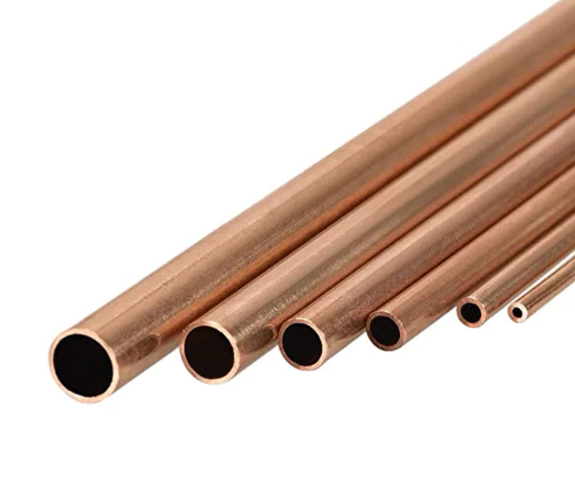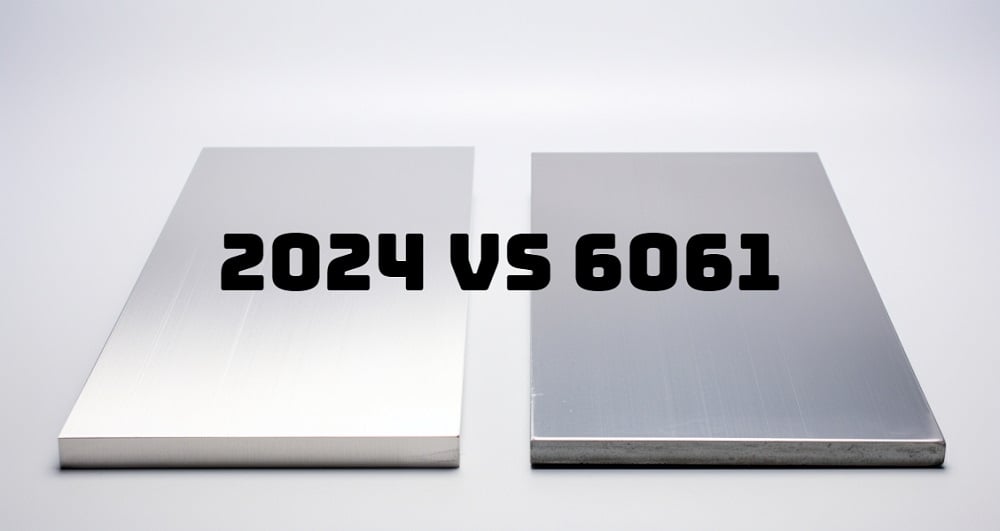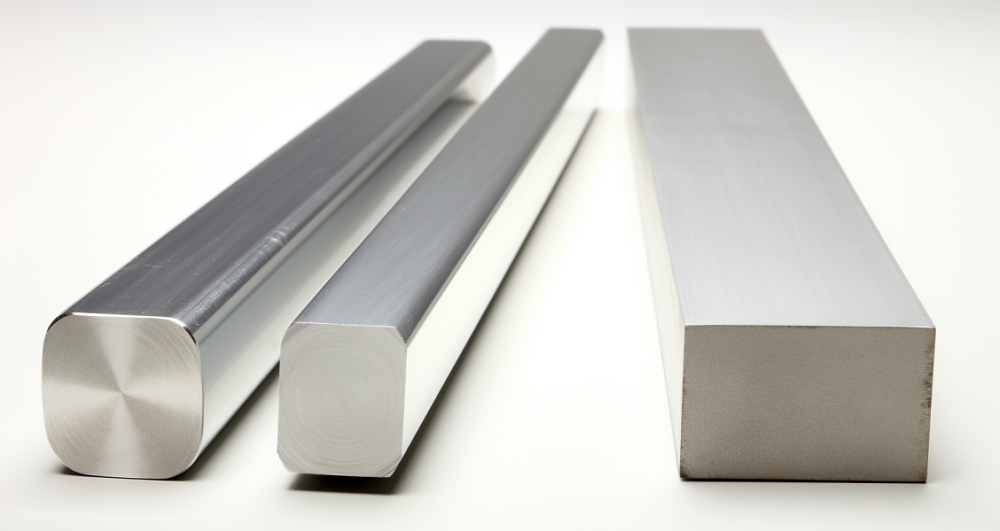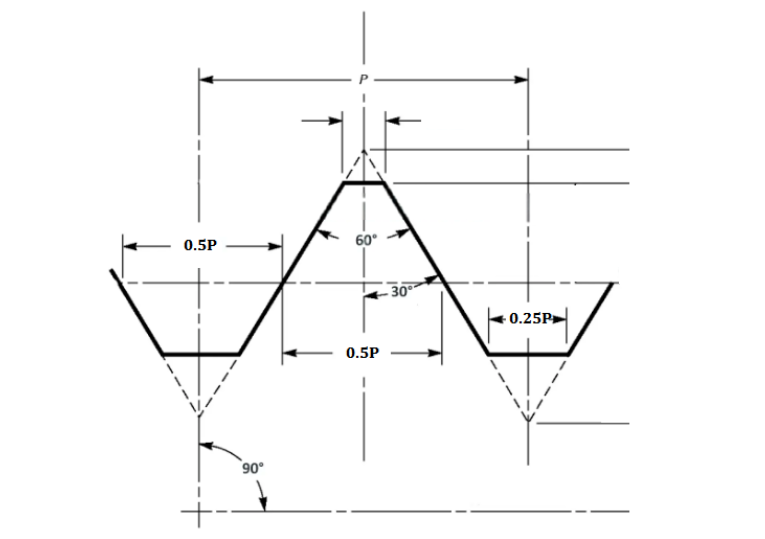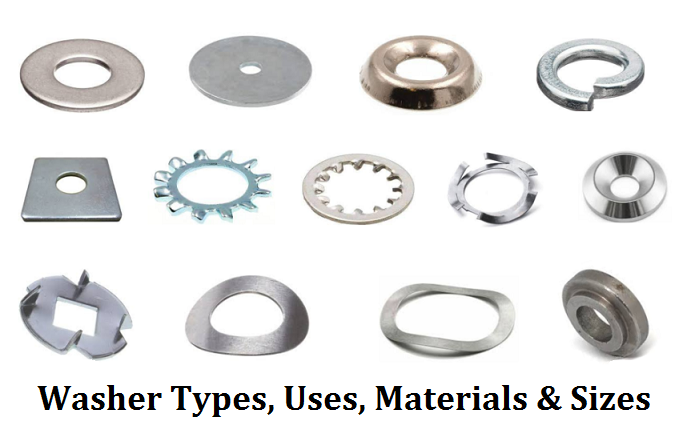Aluminum tubes are available in various sizes, shapes, and alloys. To select the best option for certain uses, let’s take a closer look at the aluminum tubing sizes (round, square, and rectangular), manufacturing process, materials, uses, and comparison with other tubes.

What Is Aluminum Tubing and Its Uses?
Aluminum tubing is a type of hollow metal with long, slender shapes made from aluminum, which is one of the most common metals on Earth, and is known for being soft, flexible, and resistant to rust or corrosion because it forms a protective layer on its surface. Aluminum tubes are widely used in lots of industries with a great strength-to-weight ratio. For example, almost all airplanes use aluminum tubing in the structure to keep them light and strong. In motorsports, aluminum tubing is used to make parts like brackets and heat shields. It is also popular in lighting and stage rigging because it can be shaped into towers or frames that are easy to carry and set up.
Aluminum Pipe vs Tube
What to note is that aluminum pipe is slightly different from aluminum tube. Pipes are generally used to carry liquids or gases and are usually round with a size based on their inside diameter, which determines how much liquid or gas can flow through them. While tubing can come in many shapes, such as square and oval, and is measured by its outer diameter and wall thickness. The typical uses of aluminum tubes are building frames or structures.
Aluminum Tube vs Steel Tube
Aluminum tubing is much lighter than steel, weighing about one-third as much for the same volume, which makes it easier to handle and transport. However, steel is generally stronger and more durable, able to withstand higher impacts, stress, and pressure without bending or warping. Aluminum is more malleable; it can be shaped or bent into complex forms without cracking, and it actually becomes stronger in cold temperatures. When it comes to corrosion resistance, aluminum has a natural protective oxide layer that prevents rust, unlike steel, which often needs coatings or paint to avoid corrosion, especially in humid or abrasive environments. An aluminum tube also conducts heat and electricity better than a steel tube, which is why it’s commonly used in radiators and electrical lines. On the other hand, steel is easier to weld and produces more consistent welds, so it is better for certain manufacturing processes. While aluminum tends to cost more per pound, its lightweight nature allows for more material per pound, and sometimes it is more cost-effective.
What Grades Are Used for Manufacturing Aluminum Tubes?
- 5052 aluminum alloy is well known for its excellent corrosion resistance, especially in salty or wet environments like the ocean. It contains magnesium, which helps protect it against rust and damage. While not the strongest alloy, 5052 is flexible and easy to work with; it is a popular choice for marine pipes, chemical tanks, and food processing systems.
- 5083 aluminum offers very high strength combined with outstanding resistance to corrosion, particularly in seawater. It contains magnesium and some other elements that help it stay strong even under heavy pressure or rough conditions. This alloy is widely used in shipbuilding, offshore platforms, and chemical storage tanks thanks to its durability and weldability.
- 5086 alloy is designed to be tough and corrosion-resistant, especially in marine and harsh chemical environments. It includes both magnesium and manganese, which improve its strength and flexibility. Because of these qualities, 5086 tube is often found in seawater cooling systems, offshore pipelines, and ship decks.
- 6061 grade is a versatile and heat-treatable alloy made with magnesium and silicon. It balances strength, corrosion resistance, and ease of welding. This alloy is common in construction, aerospace, and automotive parts. It’s strong enough to handle heavy loads and pressure, and it can be shaped into pipes or tubes with good surface finishes.
- 6063 is similar to 6061 but focuses more on surface quality and ease of extrusion. It contains magnesium and silicon as well, making it good for architectural and decorative uses like window frames, railings, and signage structures. 6063 tubes are smooth, corrosion-resistant, and perfect for visible applications where appearance matters.
- 7075 is a very strong zinc-based alloy, often called aircraft-grade aluminum. With a high strength-to-weight ratio, it is used for aerospace, military, and high-performance equipment. Although 7075 is very strong, it is less resistant to corrosion than some other alloys, so it is best used in dry or controlled environments where strength is the top priority.
How Are Aluminum Tubes Made – Aluminum Tube Manufacturing Process
Aluminum tubing can be manufactured through various methods, including extrusion, casting, forging, forming and rolling, drawing, machining, waterjet cutting, and welding. Among these, aluminum extrusion is the most common and widely used method, especially for producing tubes and pipes with various shapes and sizes.
Aluminum Extrusion
Extrusion is a process where a heated aluminum billet is forced through a die. This shapes the aluminum into a continuous length of tubing or piping that matches the die’s profile. The aluminum emerges from the die in the desired cross-section, such as round, square, or rectangular tubes. This process allows for complex shapes to be formed with precision.
Aluminum Casting
Casting involves melting aluminum and pouring it into a mold where it cools and hardens into the desired shape. This way is often used for creating thick or complex parts, but is less common for tubing because extrusion offers better control over shape and strength.
Aluminum Forging
Forging shapes aluminum by compressing and hammering heated metal into a die. It strengthens the material by rearranging its internal structure. Forging is used when durability and stress resistance are critical, although it’s less typical for tubing production.
Aluminum Forming and Rolling
In forming and rolling, aluminum slabs or sheets are passed through rollers to reduce thickness or shape them into tubes. This method produces thin-walled tubing and is often used for large sections like plates or sheets rather than small-diameter tubes.
Aluminum Drawing
Drawing pulls aluminum through a die to reduce its diameter and improve surface finish and strength. This cold-working process is common for wires and thin tubes, refining their dimensions and mechanical properties.
Aluminum Machining
CNC aluminum machining removes material from workpieces to create specific shapes or details, such as threading or holes. It is generally a secondary process used after extrusion or casting to finalize tubing features.
Aluminum Waterjet Cutting
Waterjet cutting uses high-pressure water to cut aluminum without heat, the advantage is that it can maintain the original characteristics of the metal. It is used for precision cutting of aluminum tubing or sheets into final shapes.
Aluminum Welding
Welding joins aluminum tubing pieces by melting and fusing metals together, often with gas-shielded techniques like MIG or TIG welding. It is used to assemble frames or structures made from aluminum tubes.
Basic Steps of Aluminum Extrusion
Step 1: Preparing the Die
The process begins by selecting the correct die, usually made from a tough steel like H13. The die is heated to a high temperature (around 450-500°C) to prevent damage and ensure smooth metal flow during extrusion.
Step 2: Heating the Aluminum Billet
The aluminum billet, a solid cylinder of aluminum alloy, is heated in an oven to about 400-500°C. This heating softens the metal, making it easier to push through the die without cracking or breaking.
Step 3: Loading the Billet into the Press
The heated billet is carefully placed into the extrusion press chamber. Lubricants are applied to reduce friction between the billet and the press ram.
Step 4: Extruding the Aluminum
A hydraulic ram applies an enormous force (sometimes up to 15,000 tons) to push the softened billet through the die. As the metal moves through the shaped opening, it takes the die’s form, creating a continuous tube or pipe with the desired cross-section.
Step 5: Cooling the Extrusion
Once the aluminum exits the die, it is quickly cooled, or “quenched,” using water or air to solidify and stabilize its shape. This step prevents unwanted deformation and improves mechanical properties.
Step 6: Cutting to Length
The long extruded tubing is cut into manageable lengths on a saw. The pieces are still warm but firm enough to be handled.
Step 7: Straightening and Stretching
To remove natural twists and bends caused by extrusion, the tubes are clamped in a stretcher and pulled straight. This also work-hardens the metal, improving its strength.
Step 8: Final Cutting and Heat Treatment
The tubes are cut to precise final lengths, usually between 8 and 21 feet. Depending on the alloy and intended use, they may then be heat-treated in ovens to reach specific strength levels, known as tempers like T5 or T6.
Different Types of Aluminum Tubes (Shapes)
The three main types are round, square, and rectangular aluminum tubing. These shapes vary not only in appearance but also in how they are measured and used.
- Aluminum round tubing: The most widely used shape. It has a circular cross-section and is measured by its outer diameter and wall thickness. These tubes are popular because they are strong, lightweight, and resistant to corrosion. Their round shape makes them easy to handle, bend, and connect, which is why they’re often found in places like construction scaffolding, bicycle frames, car parts, and aircraft structures. Round tubes come in many sizes, from very thin-walled versions for light-duty uses to thick-walled ones for heavy-duty support.
- Aluminum square tubing: This type has a four-sided, square cross-section, with equal side lengths measured by the tube’s outer dimensions. These tubes are valued for their sharp, clean edges and structural strength. They are commonly used in furniture frames, architectural designs like railings and decorative features, and electrical enclosures.
- Aluminum rectangular tubing: Sometimes called box section, it has a rectangular cross-section with different lengths for width and height. This shape offers enhanced rigidity and stability compared to round tubes. It is often used in frames, automotive parts, and construction applications where shape and strength are important.
Standard Aluminum Tubing Size Chart (Thickness, Weight, Gauge, ID & OD)
Below are tables featuring round, rectangular, and square aluminum tube sizes in inches. If you are looking for metric aluminum tubing sizes in mm, you can refer to DIN 1785 & ASTM B111 standards that are used for aluminum brass tubing for condenser & heating coil systems, such as 10mm x 1mm.
Aluminum Round Tubing Sizes & Dimensions
| OD or Leg Length(inch) | Wall Thickness (inch) | Stub Gauge | ID (inch) | Weight/ft. (lbs) |
|---|---|---|---|---|
| 3/16 | .035 | 20 | .117 | .0197 |
| .049 | 18 | .089 | .025 | |
| 1/4 | .035 | 20 | .180 | .027 |
| .049 | 18 | .152 | .036 | |
| .058 | 17 | .134 | .041 | |
| 5/16 | .035 | 20 | .242 | .036 |
| .049 | 18 | .214 | .047 | |
| .058 | 17 | .196 | .055 | |
| 3/8 | .035 | 20 | .305 | .043 |
| .049 | 18 | .277 | .060 | |
| .058 | 17 | .259 | .068 | |
| .065 | 16 | .245 | .074 | |
| 7/16 | .035 | 20 | .367 | .051 |
| .049 | 18 | .339 | .070 | |
| .065 | 16 | .307 | .089 | |
| 1/2 | .028 | 22 | .444 | .049 |
| .035 | 20 | .430 | .059 | |
| .049 | 18 | .402 | .082 | |
| .058 | 17 | .384 | .095 | |
| .065 | 16 | .370 | .107 | |
| 5/8 | .028 | 22 | .569 | .061 |
| .035 | 20 | .555 | .075 | |
| .049 | 18 | .527 | .106 | |
| .058 | 17 | .509 | .121 | |
| .065 | 16 | .495 | .137 | |
| 3/4 | .035 | 20 | .680 | .091 |
| .049 | 18 | .652 | .125 | |
| .058 | 17 | .634 | .148 | |
| .065 | 16 | .620 | .160 | |
| .083 | 14 | .584 | .204 | |
| 7/8 | .035 | 20 | .805 | .108 |
| .049 | 18 | .777 | .151 | |
| .058 | 17 | .759 | .175 | |
| .065 | 16 | .745 | .199 | |
| 1 | .035 | 20 | .930 | .123 |
| .049 | 18 | .902 | .170 | |
| .058 | 17 | .884 | .202 | |
| .065 | 16 | .870 | .220 | |
| .083 | 14 | .834 | .281 | |
| 1-1/8 | .035 | 20 | 1.055 | .139 |
| .058 | 17 | 1.009 | .228 | |
| 1-1/4 | .035 | 20 | 1.180 | .155 |
| .049 | 18 | 1.152 | .210 | |
| .058 | 17 | 1.134 | .256 | |
| .065 | 16 | 1.120 | 284 | |
| .083 | 14 | 1.084 | .357 | |
| 1-3/8 | .035 | 20 | 1.305 | .173 |
| .058 | 17 | 1.259 | .282 | |
| 1-1/2 | .035 | 20 | 1.430 | .180 |
| .049 | 18 | 1.40 | .260 | |
| .058 | 17 | 1.384 | .309 | |
| .065 | 16 | 1.370 | .344 | |
| .083 | 14 | 1.334 | .434 | |
| .125 | 1/8 | 1.250 | .630 | |
| .250 | 1/4 | 1.000 | 1.150 | |
| 1-5/8 | .035 | 20 | 1.555 | .206 |
| .058 | 17 | 1.509 | .336 | |
| 1-3/4 | .058 | 17 | 1.634 | .363 |
| .083 | 14 | 1.584 | .510 | |
| 1-7/8 | .508 | 17 | 1.759 | .389 |
| 2 | .049 | 18 | 1.902 | .350 |
| .065 | 16 | 1.870 | .450 | |
| .083 | 14 | 1.834 | .590 | |
| .125 | 1/8 | 1.750 | .870 | |
| .250 | 1/4 | 1.500 | 1.620 | |
| 2-1/4 | .049 | 18 | 2.152 | .398 |
| .065 | 16 | 2.120 | .520 | |
| .083 | 14 | 2.084 | .660 | |
| 2-1/2 | .065 | 16 | 2.370 | .587 |
| .083 | 14 | 2.334 | .740 | |
| .125 | 1/8 | 2.250 | 1.100 | |
| .250 | 1/4 | 2.000 | 2.080 | |
| 3 | .065 | 16 | 2.870 | .710 |
| .125 | 1/8 | 2.700 | 1.330 | |
| .250 | 1/4 | 2.500 | 2.540 |
Aluminum Rectangular Tubing Sizes & Dimensions
| OD or Leg Length (inch) | Wall Thickness (inch) | Weight/ft. (lbs) |
|---|---|---|
| .500 x 1 | .093 | .293 |
| .500 x 2 | .125 | .672 |
| .750 x 1.500 | .062 | .319 |
| .125 | .600 | |
| .750 x 1.750 | .125 | .600 |
| 1 x 1.500 | .125 | .675 |
| 1 x 2 | .062 | .428 |
| .075 | .499 | |
| .083 | .554 | |
| .093 | .628 | |
| .125 | .826 | |
| 1 x 3 | .062 | .577 |
| .125 | 1.125 | |
| 1 x 4 | .062 | .725 |
| .125 | 1.425 | |
| 1 x 5 | .125 | .976 |
| 1 x 6 | .125 | 2.026 |
| 1.250 x 2.500 | .125 | 1.050 |
| 1.500 x 2 | .125 | .976 |
| .188 | 1.406 | |
| 1.500 x 3 | .125 | 1.272 |
| 1.750 x 3 | .125 | 1.350 |
| 1.750 x 4 | .093 | 1.242 |
| .125 | 1.650 | |
| 2 x 2.50 | .125 | 1.275 |
| 2 x 3 | .093 | 1.075 |
| .125 | 1.426 | |
| .188 | 2.086 | |
| .250 | 2.700 | |
| 2 x 4 | .125 | 1.724 |
| .250 | 3.300 | |
| 2 x 5 | .093 | 1.520 |
| .125 | 2.025 | |
| .250 | 3.900 | |
| 2 x 6 | .125 | 2.327 |
| .188 | 3.440 | |
| .250 | 4.500 | |
| 2 x 7 | .125 | 2.624 |
| 2 x 8 | .125 | 2.925 |
| .250 | 5.700 | |
| 2 x 10 | .125 | 3.541 |
| .250 | 6.900 | |
| 2 x 12 | .188 | 6.210 |
| 2.5 x 3 | .125 | 1.574 |
| 2.5 x 7 | .125 | 3.115 |
| 2.5 x 9 | .250 | 6.468 |
| 2.5 x 12 | .250 | 8.400 |
| 3 x 4 | .125 | 2.026 |
| 3 x 6 | .125 | 2.625 |
| .188 | 3.891 | |
| .250 | 5.100 | |
| 3 x 8 | .188 | 4.794 |
| 3 x 10 | .125 | 3.824 |
| 3 x 12 | .188 | 6.613 |
| 4 x 6 | .125 | 2.925 |
| .188 | 4.256 | |
| .250 | 5.700 | |
| 4 x 8 | .250 | 6.900 |
| 4 x 10 | .250 | 8.036 |
| 4 x 12 | .250 | 9.3 |
| 5 x 10 | .250 | 9.752 |
| 6 x 8 | .188 | 6.196 |
| .500 | 15.286 | |
| 6 x 10 | .19 | 7.171 |
Aluminum Square Tubing Sizes & Dimensions
| OD or Leg Length (inch) | Wall Thickness (inch). | Weight/ft. (lbs) |
|---|---|---|
| .500 | .062 | .131 lb. |
| .625 | .062 | .168 |
| .750 | .040 | .131 |
| .045 | .145 | |
| .062 | .206 | |
| .093 | .293 | |
| .125 | .374 | |
| 1 | .062 | .278 |
| .075 | .317 | |
| .093 | .405 | |
| .125 | .524 | |
| 1.250 | .062 | .353 |
| .093 | .506 | |
| .125 | .675 | |
| 1.500 | .062 | .420 |
| .090 | .632 | |
| .125 | .824 | |
| .188 | 1.184 | |
| .250 | 1.500 | |
| 1.750 | .093 | .732 |
| .125 | .975 | |
| 2 | .062 | .604 |
| .093 | .851 | |
| .125 | 1.126 | |
| .188 | 1.627 | |
| .250 | 2.052 | |
| 2.250 | .095 | .982 |
| 2.500 | .075 | .855 |
| .093 | 1.074 | |
| .125 | 1.425 | |
| .188 | 2.076 | |
| .375 | 3.824 | |
| 3 | .093 | 1.298 |
| .125 | 1.726 | |
| .188 | 2.533 | |
| .250 | 3.300 | |
| 3.5 | .230 | 3.610 |
| 4 | .125 | 2.324 |
| .150 | 2.772 | |
| .250 | 4.500 | |
| 4.5 | .093 | 1.955 |
| 5 | .125 | 2.925 |
| .250 | 5.700 | |
| 6 | .125 | 3.525 |
| .250 | 6.900 | |
| .500 | 12.936 | |
| 7 | .156 | 5.120 |
| 8 | .188 | 7.050 |
| 10 | .250 | 11.7 |


